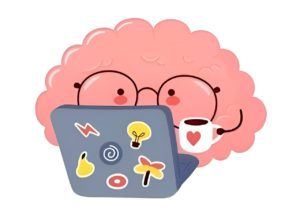- Home
- /
- Body
- /
- Human Body: Mysteries of...
- /
- Human Body: Mysteries of...
- 1. The Human Body – A Masterpiece of Design
- 2. The Cardiovascular Symphony: The Rhythmic Dance of Life
- 3. The Breath of Life: The Intricate Dance of Respiration
- 4. The Powerhouse Within: Unveiling the Marvel of Cellular Respiration
- 5. The Incredible Machine of Digestion: the Marvels of Nutrient Processing
- 6. The Guardian of Health – The Immune System
- 7. The Brain – The Control Center
- 8. The Gift of Mobility – The Musculoskeletal System
- 9. The Endocrine Harmony: Exploring the Masterful Symphony of Hormones
- 10. Mind and Body: The Intricate Connection
- 11. The Holistic Approach to Health – Nurturing Body and Mind
- 12. Healthy Habits for a Lifetime: Cultivating Wellness in Every Season
The human body is an intricate and awe-inspiring marvel of nature, comprising billions of cells and a complex network of organs and systems. It is a vessel that carries us through life’s journey, and its well-being is paramount to our overall quality of life. This is a marvel of intricate design, a symphony of biological systems working in unison to support life. From the rhythmic beat of the heart to the dance of neurons in the brain, our bodies are a complex tapestry of functions, each contributing to the symphony of existence. Yet, understanding this symphony and nurturing it for a lifetime of health and vitality is a journey that often remains veiled in mystery.
In this comprehensive exploration, we embark on a voyage through the human body and the art of holistic wellness. Our journey will take us from the cellular ballet within our tissues to the soaring crescendos of the cardiovascular symphony. We will unravel the secrets of respiration, digestion, and immunity, celebrating the wonders of each system as we uncover its role in our well-being.
But this journey is not just about anatomy and physiology; it’s about embracing a holistic approach to health. We will delve into the profound connection between mind and body, understanding how our thoughts, emotions, and choices influence our physiology. We will explore the art of healthy eating, exercise, rest, and stress management, recognizing that true well-being encompasses not just physical health but also mental and emotional harmony.
Join us on this journey through the fascinating landscape of the human body and the art of holistic health—a journey that promises not just knowledge but empowerment, vitality, and a deeper appreciation for the gift of life.
1. The Human Body – A Masterpiece of Design
Our bodies are the result of millions of years of evolution, finely tuned to adapt and thrive in the world around us. From the smallest cells to the largest organ systems, each component serves a crucial role in our survival. We’ll take a closer look at the fundamental building blocks of the human body, including cells, tissues, and organs, and how they collaborate harmoniously to maintain homeostasis.
The human body, often referred to as the pinnacle of natural engineering, stands as a testament to the wonders of evolution. It is a living masterpiece, comprised of a symphony of cells, tissues, and organs, each with a unique role and purpose. As we embark on our journey through the intricacies of the human body and the principles of a healthy lifestyle, we begin with a deep dive into the very foundation of our existence.
1.1. The Cellular Ballet: A Symphony of Life
At the core of every human being are trillions of cells, each a miniature universe in itself. These microscopic building blocks come in diverse forms, from the elegant neurons that transmit thoughts to the sturdy bone cells that provide structure and support. Yet, despite their differences, they all share a common purpose: to sustain life.
Within the intricate tapestry of the human body, the cellular ballet unfolds as a mesmerizing symphony of life at its most microscopic scale. Here, in this hidden world, each cell takes on the role of a specialized dancer, performing an elegant and vital function.
Neurons crackle with electricity, conducting our thoughts and sensations like nimble prima ballerinas.
Muscle cells flex and contract with grace, allowing us to leap, run, and embrace the rhythm of life.
Blood cells glide through delicate vessels like a corps de ballet, ferrying the sustenance of oxygen and nutrients to every corner of our being.
In this microcosmic theater, the diversity and precision of cellular roles unite to create a breathtaking performance, harmonizing to sustain the grand composition that is the human body.
1.2. Tissues and Organs – The Body’s Team Players
Cells, although remarkable, seldom work alone. They organize themselves into tissues and collaborate to form organs, such as the heart, liver, and lungs. These organs, in turn, join forces to create organ systems, the body’s multitasking workhorses.
In the magnificent symphony of the human body, tissues and organs stand as the virtuoso players, each contributing its unique instrument to the orchestration of life. Tissues, akin to the musical notes on a score, harmonize together, forming organs that are the performers of this awe-inspiring composition.
A. The Notes of Tissues
Picture tissues as the individual musical notes in an elaborate composition. Epithelial tissues, akin to the delicate keys of a piano, create protective barriers on our surfaces, from skin to the linings of our vital organs.
Connective tissues, with their strength and resilience, act as the strings of a cello, providing the structural foundation that binds the body together.
Muscular tissues, with their rhythmic contractions, echo the strings of a violin, allowing us to dance through our daily lives.
Nervous tissues, as the electrical circuits of our grand melody, transmit messages and orchestrate the symphony of our existence.
B. Organs – The Virtuoso Performers
As tissues combine their melodies, organs emerge as the virtuosos of this biological orchestra. The heart, with its rhythmic pulsations, conducts the flow of life-giving blood throughout the body. Lungs, with their harmonious exchange of oxygen and carbon dioxide, perform the ballet of breath. The liver, an organ of metabolic complexity, orchestrates a multifaceted concerto that facilitates digestion and detoxification. Each organ possesses its own unique talents, contributing to the magnificent opus that is human existence.
C. The Symphony of Organ Systems
These organs, like the instruments in a grand orchestra, come together to form organ systems, the majestic sections of our biological symphony.
The circulatory system, like a crescendo of heartbeats, distributes nutrients and oxygen.
The respiratory system, with its rhythmic inhalations and exhalations, creates the symphonic melody of breath.
The digestive system, an ensemble of organs, transforms sustenance into energy and vitality.
Each organ system plays its role, layering melodies upon melodies, crafting the symphony of life that reverberates within us.
In unraveling the harmonious collaboration of tissues and organs, we gain insight into the orchestration of our very existence. Every tissue and organ is a unique performer in this grand symphony of life, adding its notes to the ongoing composition of our well-being. Just as a conductor unites the instruments of an orchestra into a harmonious whole, our bodies blend these diverse elements into the masterpiece that is the human experience.
1.3. Harmony in Homeostasis: The Body’s Delicate Balance
As we venture further into the inner workings of the human body, we will discover the concept of homeostasis—the delicate balance that the body strives to maintain. Whether it’s regulating temperature, blood sugar levels, or pH balance, the body is a master conductor of harmony, constantly adjusting its symphony to adapt to changing conditions.
In the intricate orchestration of the human body, maintaining balance is the unyielding conductor, ensuring that the symphony of life plays on harmoniously. This delicate equilibrium is known as homeostasis, a mechanism that ensures our internal environment remains stable despite the ever-changing external world.
A. The Body’s Maestro of Balance
Homeostasis operates like a maestro at the helm of a symphony orchestra, keenly aware of the need for precise timing and fine-tuned adjustments. It monitors critical variables such as temperature, blood sugar levels, and pH balance, orchestrating the body’s responses to keep these parameters within a narrow and optimal range.
B. Feedback Loops: The Musical Score of Regulation
At the heart of homeostasis are intricate feedback loops, akin to the musical score of regulation. These loops involve sensors, effectors, and a central control center, such as the hypothalamus in temperature regulation.
When any parameter strays from its ideal note, the sensors detect the deviation and send signals to the control center, much like a musician conveying the need for adjustment to the conductor. The control center then orchestrates a response through effectors, such as muscles or glands, to restore balance.
This process repeats continuously, ensuring the body’s internal conditions remain within the desired range.
C. The Endocrine System: Silent Conductor of Hormonal Harmony
While many feedback loops are local, some involve the endocrine system—a silent conductor of hormonal harmony. Hormones, the body’s chemical messengers, act as subtle cues, regulating processes from growth to metabolism. They ensure that the symphony of life maintains its rhythmic cadence by fine-tuning various bodily functions.
Understanding the concept of homeostasis is to grasp the intricate workings of the body’s inner sanctum—a domain where balance reigns supreme. It underscores the body’s remarkable ability to adapt, regulate, and sustain itself, much like a skilled conductor ensuring that every note aligns perfectly in the symphony of life. This concept serves as a foundation for comprehending the significance of a healthy lifestyle—a lifestyle that strives to support and fortify the body’s natural propensity for harmony.
1.4. The Resilient Machine: Nature’s Masterpiece of Repair and Regeneration
The human body’s adaptability and resilience are awe-inspiring. It can heal wounds, fend off infections, and recover from illness or injury, all thanks to its remarkable regenerative abilities. We will uncover the secrets of tissue repair and the extraordinary capacity of the immune system to protect us from invaders.
The human body is an embodiment of resilience and adaptability, constantly renewing and restoring itself like a magnificent work of art. Within this intricate system lies the power to heal wounds, fend off infections, and recover from ailments or injuries. It is in these moments of recovery and regeneration that the human body’s resilience truly shines.
A. The Dance of Tissue Repair
Picture tissue repair as an elegant dance—a choreographed performance that brings damaged parts back to life.
When injury strikes, a series of intricate cellular movements begins, much like dancers gracefully taking their positions on a stage. Inflammation sets the stage, with blood vessels widening to allow the flow of healing factors and immune cells, like stagehands preparing the scene. Fibroblasts, the body’s skilled artisans, weave a network of collagen, creating a scaffold for rebuilding, much like the backdrop of a theater production.
Then, new blood vessels emerge, resembling spotlights illuminating the way. The process culminates with specialized cells remodeling and restoring the tissue to its original glory, akin to the actors delivering a captivating performance.
B. The Vigilant Immune Sentinels
In this magnificent theater of recovery, the immune system serves as vigilant sentinels, akin to ushers ensuring the safety of the audience. White blood cells, the body’s defenders, patrol the injured area, neutralizing threats and maintaining a balance between protection and healing.
The immune system’s precision and adaptability are awe-inspiring, adapting to the specific needs of each situation with the finesse of a seasoned actor mastering multiple roles.
C. The Beauty of Regeneration
Beyond repair, the body also possesses the extraordinary power of regeneration. Some tissues, like the liver and skin, can regrow lost or damaged parts, resembling the rebirth of a phoenix from its own ashes. Stem cells, the body’s versatile artists, contribute to this regenerative wonder by replenishing damaged cells and tissues.
The resilience of the human body is a testament to nature’s artistry. It showcases our ability to recover, adapt, and thrive in the face of adversity.
Understanding this remarkable capacity for renewal serves as a poignant reminder of the importance of nurturing our bodies through a healthy lifestyle—one that supports the body’s innate ability to perform the magnificent dance of repair and regeneration.
2. The Cardiovascular Symphony: The Rhythmic Dance of Life
The heart, arteries, and veins form the body’s circulatory system, responsible for pumping blood and delivering oxygen and nutrients to every cell. We’ll explore the mechanics of the heart, the intricacies of blood vessels, and the importance of maintaining a healthy cardiovascular system through diet, exercise, and stress management.
In the grand orchestra of the human body, the cardiovascular system takes center stage as the conductor of a life-sustaining symphony. This intricate network of the heart, arteries, and veins orchestrates the rhythmic dance of life, delivering oxygen and nutrients to every cell and sweeping away waste products.
In this chapter, we will unravel the fascinating mechanics of the cardiovascular system, exploring the rhythmic beats of the heart, the intricate pathways of blood vessels, and the profound impact of a healthy cardiovascular system on our overall well-being.
2.1. The Heart – The Maestro’s Baton
At the heart of our cardiovascular symphony lies a true marvel of nature—the human heart. This organ, about the size of a clenched fist, serves as the unwavering conductor’s baton, setting the rhythm for the grand performance of life.
With each rhythmic beat, the heart orchestrates a symphony of circulation, propelling oxygen-rich blood into the arteries, ready to nourish and enliven every cell in the body. Its four chambers, the atria and ventricles, work in harmonious synchrony, akin to the coordinated movements of a conductor’s hand, ensuring a seamless flow of blood.
Electrical impulses course through the heart’s specialized pathways, akin to the musical score guiding the musicians, maintaining its steady tempo. The heart’s tireless commitment to its role as the conductor of life reminds us of its profound significance in sustaining our existence and the imperative of nurturing it through a healthy lifestyle.
2.2. Arteries and Veins – The Circulatory Orchestra
Arteries and veins, akin to the various sections of an orchestra, play distinct yet harmonious roles in the cardiovascular symphony. They carry oxygenated blood away from the heart, coursing through the body’s vast highway system of vessels. Veins, on the other hand, bring deoxygenated blood back to the heart for reoxygenation.
In the magnificent orchestration of our cardiovascular symphony, arteries and veins stand as the diverse sections of a harmonious orchestra. Arteries, robust and dynamic, play the role of the brass and percussion sections, carrying oxygenated blood away from the heart and conducting it through the intricate network of the body’s circulatory highways.
Veins, in contrast, embrace a quieter, yet equally vital role, akin to the strings and woodwinds, returning deoxygenated blood back to the heart for revitalization. Together, they create a mesmerizing symphony of circulation, adapting to the body’s ever-changing needs and maintaining the delicate balance of blood pressure.
This circulatory orchestra, with its distinct yet harmonious components, illustrates the sheer complexity and beauty of the cardiovascular system’s design, inviting us to appreciate the intricate dance of life that unfolds within us with every heartbeat.
2.3. Blood – The Musical Notes of Life
Blood, our life’s musical notes, courses through the veins like a sonorous melody. It transports not only oxygen and nutrients but also immune cells, hormones, and waste products.
Blood, the life-giving elixir that courses through our veins, is akin to the musical notes in the grand score of existence. Its rich crimson hues conceal a world of complexity and vitality. This vital fluid is not merely a carrier of oxygen and nutrients, but a composition of living cells and essential components that breathe life into our bodies.
Red blood cells, like the steady rhythm section of a symphony, transport oxygen to fuel the metabolic melodies of our cells. White blood cells, the vigilant defenders, roam like musicians improvising harmony and safeguarding against invaders. Platelets, resembling nimble percussionists, orchestrate the clotting cascade to staunch bleeding when needed.
Plasma, the liquid component, carries a symphony of hormones, electrolytes, and proteins, ensuring a harmonious balance within. Truly, blood is the musical score of life, each component a unique note that, when combined, creates the symphony that is our health and vitality. Understanding its composition and role enriches our appreciation for the life-enabling performance happening within us every moment.
2.4. The Conductor’s Precision – Cardiovascular Health
Maintaining the precision of our cardiovascular conductor is paramount to the symphony of life. It’s not just about the heart’s steady rhythm, but also the collective health of the entire orchestra—arteries, veins, and blood alike. This intricate composition responds to the conductor’s cues, influenced by the choices we make in our daily lives.
A balanced diet, rich in nutrients and heart-healthy foods, can fine-tune the conductor’s baton, ensuring that each beat is strong and harmonious. Regular physical activity, akin to rehearsing a musical piece, keeps the entire orchestra in sync, promoting a robust cardiovascular system.
More about diet for decreasing blood pressure read here: Reducing high blood pressure
Stress management techniques, the calming interludes in our performance, help maintain steady rhythms and prevent discord. The pursuit of cardiovascular health, much like nurturing a symphony, is a continual journey toward maintaining the precision and grace of the conductor, allowing the cardiovascular symphony to play on, enriching our lives with the music of vitality and well-being.
In the cardiovascular symphony, the heart is not just a muscular pump; it’s the soul of our existence. Understanding its rhythms, the vessels it conducts through, and the vital role of blood within, equips us with the knowledge to appreciate the significance of a healthy cardiovascular system. As we embark on this melodic journey, we’ll discover that by nurturing the cardiovascular symphony, we not only extend the life’s duration but also enrich its harmony, allowing the dance of life to continue in all its resplendent glory.
3. The Breath of Life: The Intricate Dance of Respiration
The respiratory system, comprising the lungs and airways, allows us to take in oxygen and expel carbon dioxide. We’ll discuss the fascinating process of breathing, its link to overall health, and strategies to support optimal lung function.
In the grand orchestration of human existence, the act of breathing takes center stage as one of the most vital and rhythmic movements. The respiratory system, often taken for granted, is the conductor of this silent symphony that sustains our very essence.
In this chapter, we embark on a journey to unravel the captivating mechanics of respiration, exploring the wondrous dance of inhalation and exhalation, and delving deep into the science of breathing. As we uncover the profound connection between breath and life, we’ll learn how to optimize this essential function for our overall well-being.
3.1. The Lungs – Nature’s Bellows
The lungs, like masterful bellows, are the performers at the heart of the respiratory symphony. Their intricate structure, with branching airways and delicate alveoli, transforms the exchange of gases into a mesmerizing ballet. Oxygen, our life’s sustenance, is inhaled with every breath, while carbon dioxide, a metabolic byproduct, is exhaled, a testament to the lungs’ impeccable choreography.
3.2. The Respiratory Muscles – The Silent Dancers
Behind the scenes, the respiratory muscles, including the diaphragm and intercostal muscles, are the silent dancers that drive the breathing process. They contract and relax in precise harmony, creating changes in lung volume and pressure that draw in the life-giving oxygen and expel the waste carbon dioxide. This intricate dance is a testament to the precision of nature’s design.
3.3. Respiratory Health – The Conductor’s Baton
Respiratory health, much like the conductor’s baton in an orchestra, influences the symphony of our lives. This is akin to the conductor’s baton in the symphony of life, guiding the rhythm and quality of our existence. Just as a skilled conductor shapes the music’s flow, maintaining healthy lungs ensures the harmonious cadence of our breath.
Preventing respiratory ailments, such as infections and allergies, is akin to tuning the instruments before a performance, setting the stage for a smooth and melodious symphony. Regular exercise, like rehearsing a musical piece, optimizes lung capacity, enhancing the depth and power of our breathing.
Moreover, the practice of mindful breathing serves as the calming interlude, akin to a soothing melody amidst the symphony, reducing stress and promoting overall well-being. Understanding the importance of respiratory health is to embrace the conductor’s baton, allowing us to lead a life orchestrated with harmony, vitality, and the sweet melodies of deep, conscious breaths.
The breath of life is a silent yet powerful symphony that accompanies us from birth to the end of our journey. As we uncover the secrets of respiration, we gain a deeper appreciation for the profound connection between breath and vitality.
4. The Powerhouse Within: Unveiling the Marvel of Cellular Respiration
Deep within the microscopic landscape of our cells lies a hidden powerhouse—an engine that fuels our every movement, thought, and heartbeat. This chapter delves into the wonders of cellular respiration, the intricate process that transforms nutrients into the energy currency of life, adenosine triphosphate (ATP).
As we embark on this journey, we’ll explore the biochemical intricacies of mitochondria, the powerhouses of our cells, and unlock the secrets of energy production. Understanding the profound link between cellular respiration and our overall vitality will empower us to make choices that enhance the powerhouse within.
4.1. Mitochondria – The Cellular Powerhouses
Mitochondria, often referred to as the cellular powerhouses, are the stars of the show in cellular respiration. These tiny, double-membraned organelles are the sites where the chemical magic happens.
Through a series of complex reactions, they extract energy from the nutrients we consume, primarily glucose and fatty acids. This energy is then converted into ATP, the molecular currency that powers the countless biochemical processes essential for life.
4.2. The Dance of Cellular Respiration
Cellular respiration can be likened to a choreographed dance of chemical reactions.
It unfolds in three stages: glycolysis, the citric acid cycle (Krebs cycle), and the electron transport chain.
Each stage involves a cascade of chemical transformations, much like dancers moving in harmony across the stage.
As electrons are shuttled along, protons are pumped across mitochondrial membranes, creating a proton gradient. The subsequent flow of protons back through a protein complex, ATP synthase, drives the synthesis of ATP, analogous to the crescendo in a musical performance.
4.3. The Energy Currency – ATP
ATP, the result of cellular respiration, is the energy currency that fuels every cell’s activities. It powers muscle contractions, transports molecules within the cell, and even drives thought processes in our brains. It’s the spark that keeps the engine of life running smoothly.
4.4. Nurturing the Powerhouse Within
Understanding cellular respiration offers insights into how we can nurture the powerhouse within.
A balanced diet, rich in nutrients and antioxidants, fuels our cells with the raw materials they need for energy production.
Regular physical activity, much like a workout for our cellular dancers, optimizes mitochondrial function and energy production.
Additionally, reducing oxidative stress and inflammation through healthy lifestyle choices supports the efficiency of this remarkable process.
This chapter serves as an invitation to peer into the hidden depths of our cellular powerhouses and discover the secrets of energy production. Recognizing the profound link between cellular respiration and our overall vitality empowers us to make choices that not only optimize our physical energy but also enhance the powerhouse within, enabling us to lead lives of vigor and well-being.
5. The Incredible Machine of Digestion: the Marvels of Nutrient Processing
Digestion is a complex process involving multiple organs, enzymes, and intricate chemical reactions. We’ll explore the digestive system’s workings, discuss the importance of a balanced diet, and provide tips for maintaining digestive health.
Deep within our bodies, a remarkable machine tirelessly toils to transform food into the energy and building blocks that sustain life. In this chapter, we embark on a journey to explore the wonders of the digestive system—the intricate network of organs and processes that enable us to extract nutrients from the foods we consume.
As we unravel the biochemistry of digestion, we will uncover the role of enzymes, the secrets of nutrient absorption, and the importance of a balanced diet. Understanding the incredible machine of digestion is key to harnessing the power of nutrition for vibrant health and vitality.
5.1. The Digestive Tract – Nature’s Processing Line
The digestive tract, often likened to nature’s processing line, is a complex series of organs, each with a unique role in breaking down and absorbing nutrients.
It begins in the mouth, where saliva initiates the digestion of carbohydrates, and progresses through the stomach and small intestine, where acids and enzymes further break down food.
The pancreas and liver contribute digestive juices, while the large intestine extracts water and electrolytes, preparing the remnants for elimination.
5.2. Enzymes – The Catalysts of Digestion
Enzymes are the catalysts that orchestrate the biochemical symphony of digestion.
Each enzyme has a specific role, breaking down particular nutrients into forms that the body can absorb. For instance, amylase digests carbohydrates, while proteases target proteins, and lipases tackle fats.
Enzymes are like conductors, ensuring that the digestive process flows smoothly and efficiently.
5.3. Nutrient Absorption – The Body’s Bounty
The absorption of nutrients occurs primarily in the small intestine, where the body selectively takes in vital compounds like glucose, amino acids, and fatty acids.
These nutrients are then transported into the bloodstream, akin to concertgoers finding their seats, ready to nourish cells and fuel metabolic processes throughout the body.
5.4. The Role of a Balanced Diet
The digestive system’s efficiency is closely tied to the quality of the fuel it processes. A balanced diet rich in vitamins, minerals, fiber, and macronutrients provides the essential elements for optimal health and energy production. It’s like providing the finest instruments to the musicians in an orchestra, ensuring that the symphony of digestion plays on harmoniously.
About one of diet that helps solve the digestive problem read the article: The FODMAP Diet: A Comprehensive Guide to Better Digestion
Understanding the incredible machine of digestion is an invitation to appreciate the intricate processes that occur every time we sit down to a meal. It empowers us to make informed dietary choices, promoting not just nourishment but also overall well-being. As we delve into this chapter, we unlock the secrets of nutrient processing, allowing us to harness the power of nutrition for a life filled with vitality and health.
6. The Guardian of Health – The Immune System
Within our bodies resides an unsung hero, tirelessly patrolling the realms of our physiology to protect us from invaders.
This chapter delves into the intricacies of the immune system, a formidable guardian of our health. We explore its remarkable capacity to identify and neutralize threats, the role of white blood cells and antibodies, and the importance of immune health.
Understanding the immune system’s vigilant watch over our well-being empowers us to make choices that fortify this protective shield and nurture our overall health.
About one of the immune system work examples read in the article: Hardening: Strengthening Your Health Through Resilience
6.1. The Immune Response – Nature’s Defense Mechanism
The immune system is nature’s defense mechanism, poised to detect and combat foreign invaders.
When pathogens, such as bacteria, viruses, or other foreign substances, breach our body’s barriers, the immune system springs into action.
This dynamic response can be likened to a well-coordinated army, with different types of immune cells and proteins working in unison to neutralize threats.
6.2. White Blood Cells – The Sentinels of Immunity
White blood cells, or leukocytes, are the sentinels of immunity. They patrol the bloodstream, seeking signs of infection or disease.
Phagocytes, like scavengers, engulf and digest invaders, while lymphocytes, such as T cells and B cells, orchestrate specific responses, including the production of antibodies.
These remarkable cells, akin to vigilant guardians, play pivotal roles in maintaining our health.
6.3. Antibodies – Precision Weapons of Immunity
Antibodies, also known as immunoglobulins, are precision weapons in the immune arsenal. These Y-shaped proteins are designed to lock onto specific pathogens, marking them for destruction. It’s as if each antibody is a key that fits only a particular lock, ensuring targeted neutralization of threats.
6.4. Nurturing Immune Health
The strength of the immune system is closely tied to our lifestyle and choices. Adequate sleep, a balanced diet rich in vitamins and minerals, regular exercise, and stress management all contribute to immune health. Like fortifying the walls of a castle, these practices bolster our defenses and enhance the immune system’s ability to protect us from harm.
Understanding the immune system’s unwavering vigilance is an invitation to appreciate the complex machinery that safeguards our health. It empowers us to make choices that bolster our immunity, promoting not just protection but also overall well-being.
7. The Brain – The Control Center
In the grand orchestra of the human body, the brain stands as the unrivaled conductor, overseeing the myriad processes that define our existence.
This chapter delves into the marvels of the brain, an intricate network of neurons and synapses that governs our thoughts, emotions, movements, and memories.
We explore the structure of the brain, its functions, and the mysteries of consciousness. Understanding the brain’s central role in our lives empowers us to cultivate mental well-being and make choices that optimize our cognitive and emotional health.
About diet that can improve brain work read here: The MIND Diet: Nourishing Your Brain for Optimal Health
7.1. The Brain’s Structure – A Symphony of Neurons
The brain comprises billions of neurons, each a unique player in the symphony of cognition. These neurons communicate through intricate connections called synapses, forming complex neural networks that process information and generate thoughts and emotions.
The brain’s different regions, such as the cerebral cortex, limbic system, and brainstem, perform specialized functions, orchestrating everything from sensory perception to motor control.
7.2. Functions of the Brain – The Multifaceted Maestro
The brain, much like a multifaceted maestro, directs a vast array of functions. It processes sensory inputs, allowing us to perceive the world around us. It stores and retrieves memories, forming the narrative of our lives.
Brain controls our movements, from intricate finger dexterity to the coordination of muscles involved in dance and athletics. Emotions, thoughts, and consciousness itself are products of the brain’s intricate workings.
7.3. The Mind-Body Connection – Harmony Within
The brain’s influence extends beyond our thoughts and emotions to impact our physical health. The mind-body connection is a profound testament to this.
Stress, for instance, can manifest as physical symptoms, while practices like mindfulness meditation can reduce pain perception and enhance overall well-being. Nurturing mental health is akin to tuning the conductor’s baton, ensuring that the symphony of our lives plays on harmoniously.
More about mind-body connection read in the article: Psychosomatics: The Mind-Body Connection
By understanding its structure, functions, and the mind-body connection, we gain insight into the profound role the brain plays in shaping our lives. It empowers us to make choices that support mental well-being, cultivating not just cognitive health but also emotional harmony and resilience.
8. The Gift of Mobility – The Musculoskeletal System
In the grand tapestry of our lives, the musculoskeletal system serves as the framework and machinery that enables us to move, explore, and interact with the world.
This chapter embarks on a journey to explore the wonders of this intricate system, the bones and muscles that make mobility possible. We will delve into the structure of bones, the mechanics of muscles, and the harmony of joints, uncovering the secrets of balance and motion.
Understanding the gift of mobility bestowed upon us by the musculoskeletal system empowers us to maintain strength, flexibility, and overall physical well-being.
8.1. Bones – The Architectural Framework
Bones are the architectural framework of the body, much like the beams and pillars of a grand building. They provide structural support, protect vital organs, and serve as reservoirs for essential minerals.
The human skeleton, a dynamic and ever-changing framework, adapts to the demands of growth and aging, allowing us to stand tall and move gracefully.
8.2. Muscles – The Engines of Motion
Muscles are the engines of motion, much like the motors that power vehicles. These contractile tissues generate force and movement, allowing us to walk, run, grasp, and express ourselves through physical actions.
The coordinated efforts of different muscle groups enable us to perform intricate tasks, from typing on a keyboard to executing a perfect pirouette.
8.3. Joints – The Articulated Connections
Joints are the articulated connections that facilitate movement, much like the hinges on a door. These pivot points allow bones to move relative to one another, enabling a vast range of motions. The health and flexibility of joints are essential for maintaining mobility and preventing discomfort or disability.
8.4. Balance and Harmony – The Dance of Musculoskeletal Health
The musculoskeletal system is a symphony of balance and harmony. Proper nutrition, regular exercise, and proactive care are the keys to maintaining musculoskeletal health.
A balanced diet provides the nutrients bones need to stay strong, while exercise preserves muscle mass and joint flexibility.
Regular physical activity, including strength training and flexibility exercises, fortifies this system, ensuring it serves us well throughout our lives.
More about how physical activity affect our body read here: Sport and Healthy Lifestyle: Physical Activity Contribution in Health
Understanding the marvels of the musculoskeletal system is an invitation to appreciate the intricate machinery that grants us the gift of mobility. It empowers us to make choices that support the health and functionality of bones, muscles, and joints, allowing us to embrace life’s physical joys with vigor and vitality.
9. The Endocrine Harmony: Exploring the Masterful Symphony of Hormones
Deep within the our bodies, a symphony of hormones orchestrates a complex and delicate dance, regulating everything from metabolism to mood.
This chapter is a journey into the world of the endocrine system, a masterful network of glands and hormones that wield profound influence over our physiological and emotional well-being.
We’ll explore the role of hormones, the endocrine glands, and the intricate interplay that governs our health. Understanding the endocrine harmony empowers us to navigate life’s transitions, optimize health, and foster emotional balance.
9.1. Hormones – The Chemical Messengers of Life
Hormones are the chemical messengers that relay vital information within the body. They regulate growth, metabolism, reproduction, and a host of other functions.
Each hormone is like a skilled musician playing a specific instrument in the orchestra of life, harmonizing with others to maintain equilibrium.
9.2. Endocrine Glands – Nature’s Hormonal Maestros
Endocrine glands, like nature’s hormonal maestros, are scattered throughout the body.
From the pituitary gland in the brain to the thyroid gland in the neck and the adrenal glands atop the kidneys, these glands secrete hormones into the bloodstream, coordinating countless physiological processes.
Each gland has its own role, ensuring the entire orchestra of hormones performs its duties seamlessly.
9.3. The Intricate Interplay – Hormonal Harmony
The endocrine system is marked by an intricate interplay of hormones, much like the harmonious blend of musical notes in a symphony.
For example, the thyroid hormones regulate metabolism, insulin controls blood sugar levels, and cortisol responds to stress. The exquisite balance of these hormones influences everything from energy levels to emotional well-being.
9.4. Optimizing Endocrine Health – The Art of Balance
Balancing the endocrine system is akin to conducting a symphony. Lifestyle choices, including diet, exercise, and stress management, play crucial roles in hormone regulation.
A balanced diet rich in nutrients supports hormone production, while regular physical activity optimizes metabolism. Managing stress, much like maintaining harmonious melodies, prevents the discordant effects of excessive cortisol.
Understanding the endocrine harmony invites us to appreciate the profound role hormones play in shaping our lives. It empowers us to make choices that support hormonal balance, fostering emotional well-being, and optimizing physical health.
10. Mind and Body: The Intricate Connection
In the complex web of human existence, the intricate connection between mind and body is both profound and undeniable.
This chapter delves into the interplay between our mental and physical well-being, exploring how thoughts, emotions, and stress influence our physiology.
We’ll uncover the mind-body connection’s far-reaching impact on health, resilience, and overall vitality, and learn how to cultivate harmony between the two for a richer, more balanced life.
10.1. The Mind-Body Connection – A Seamless Synergy
The mind and body are not separate entities but rather a seamless synergy.
Our thoughts and emotions influence physiological processes through intricate pathways, and our physical health can shape our mental well-being.
This interconnectedness is like the fluid exchange between two dancers in a perfectly choreographed duet.
10.2. Stress and the Body – The Power of Perception
Stress, whether from external factors or our own thoughts, can exert a powerful influence on the body.
The brain perceives stressors and signals the release of hormones like cortisol, initiating a cascade of physiological responses.
Chronic stress, like a dissonant note in a symphony, can disrupt the body’s delicate balance and lead to health issues.
10.3. Emotions and Health – The Heartfelt Connection
Emotions are not just mental experiences; they have a tangible impact on health.
For instance, positive emotions like joy and gratitude can boost the immune system, while chronic negative emotions like anger and sadness may increase inflammation.
The heart, often seen as the seat of emotions, communicates with the brain through neural pathways, demonstrating the close relationship between our emotional state and physical well-being.
10.4. Mind-Body Practices – Nurturing Harmony
Mind-body practices like mindfulness meditation, yoga, and deep breathing techniques provide tools to foster harmony between the mind and body. These practices enhance self-awareness, reduce stress, and promote relaxation, allowing us to navigate life’s challenges with greater resilience and emotional balance.
More about meditation read in the article: The Transformative Power of Meditation
Understanding the intricate connection between mind and body is an invitation to appreciate the holistic nature of human health. It empowers us to make choices that nurture emotional well-being and support physical vitality.
11. The Holistic Approach to Health – Nurturing Body and Mind
In the pursuit of optimal well-being, it’s essential to recognize that a holistic approach encompasses not only healthy eating but also the profound impact of regular physical activity, rest and recovery, and effective stress management.
This chapter dives into the interconnected web of these pillars of health, understanding how they influence our bodies and minds, and discovering the art of finding balance in the chaos of modern life.
11.1. Healthy Eating – The Foundation of Wellness
Healthy eating forms the bedrock of well-being. It’s more than just fueling the body; it’s about nourishing the soul. A balanced diet provides the nutrients necessary for physical vitality and cognitive clarity.
It also fosters a deep connection with the food we consume, celebrating the joy of culinary creativity while respecting the principles of mindful eating.
About healthy eating habits read in the article: Healthy Eating Habits: Nurture Body Correctly
11.2. Sport and Physical Activity – The Body’s Celebration
Sport and physical activity are the body’s celebration of movement and strength. Regular exercise not only keeps our muscles toned and our hearts healthy but also elevates our mood and sharpens our mental faculties.
It’s a reminder that our bodies are designed for motion, and through movement, we discover the profound connection between physical and mental well-being.
11.3. Rest and Recovery – The Body’s Rejuvenation
Rest and recovery are the body’s rejuvenation periods. Quality sleep, relaxation, and downtime are essential for repairing tissues, consolidating memories, and recharging the spirit.
How to create ideal conditions for sleep read in the article: How to sleep well?
It’s a reminder that in the rhythm of life, pauses and breaks are as vital as the active beats.
How not to burn our read in the article: The Rest in Healthy Lifestyle: How not to burn out
11.4. Stress Management – The Mind’s Balance
Effective stress management is the mind’s balance amidst the demands of modern life. It encompasses techniques like mindfulness, meditation, and deep breathing, which allow us to navigate the challenges of stress with grace and resilience. It’s a reminder that the mind and body are inextricably linked, and by managing stress, we cultivate holistic well-being.
Understanding the holistic approach to health is an invitation to embrace all facets of our well-being. It empowers us to make choices that prioritize not only physical health through nutrition and exercise but also mental and emotional wellness through rest, recovery, and stress management.
12. Healthy Habits for a Lifetime: Cultivating Wellness in Every Season
As we navigate the ever-changing landscape of life, the key to enduring health and well-being lies in the cultivation of healthy habits that can stand the test of time.
This chapter is a roadmap to lifelong wellness, exploring the habits and practices that promote vitality, resilience, and contentment. We’ll delve into the importance of consistency, adaptability, and the power of small, sustainable changes.
Understanding the art of cultivating healthy habits empowers us to embrace wellness as a lifelong journey, no matter the season of life we find ourselves in.
12.1. The Power of Consistency – Small Steps, Big Results
Consistency is the cornerstone of lasting change. It’s not about drastic transformations but about the cumulative impact of small, daily habits. These habits become part of our routine, like the brushstrokes in a masterpiece, gradually shaping our lives over time.
12.2. Adaptability – Thriving Amidst Change
Life is a journey filled with transitions, and adaptability is our compass. It’s the ability to adjust our habits and routines to meet the demands of different seasons, whether it’s a busy period at work, a life-changing event, or the natural progression of aging. Like a tree bending with the wind, adaptability allows us to thrive amidst change.
12.3. Sustainability – The Art of Lifelong Wellness
Sustainability is the art of creating habits that endure. It’s about choosing practices that align with our values and can be maintained throughout our lives. These habits become the threads of a tapestry that we continue to weave, creating a lifelong story of wellness.
12.4. Mindset – The Heart of Healthy Habits
A positive mindset is the heart of healthy habits. It’s the belief that we have the capacity for change, that setbacks are opportunities for growth, and that wellness is not a destination but a lifelong journey. It’s the canvas on which we paint the vibrant picture of our lives.
Understanding the art of cultivating healthy habits is an invitation to embrace wellness as an ongoing, lifelong endeavor. It empowers us to make choices that promote vitality, resilience, and contentment, regardless of the season of life we find ourselves in.
More tips of habits formations get known here: The Science of Healthy Habits Formation
The Ongoing Symphony of Well-Being
The human body is a remarkable creation, capable of extraordinary feats when properly cared for. Embracing a healthy lifestyle is not only an investment in our physical well-being but also in our overall happiness and longevity. By understanding the intricate workings of our bodies and making informed choices, we can embark on a journey toward a life filled with vitality and well-being. Remember, your body is your most precious possession, and with the right care, it can carry you through a long and fulfilling journey.
Conclusion
As we conclude our exploration of the human body and the art of holistic wellness, we find ourselves standing at the precipice of understanding, armed with knowledge, and enriched by insight. We have journeyed through the intricacies of our biology, marveled at the symphonies that play within us, and embraced the profound connection between mind and body. We have celebrated the art of healthy eating, exercise, rest, and stress management, recognizing that true well-being is a tapestry woven from these diverse threads.
Yet, this journey is not one with a final destination. It’s an ongoing symphony, a lifelong endeavor that requires both attention and intention. The human body, with its remarkable resilience and adaptability, is a canvas upon which we can paint a masterpiece of health and vitality. The choices we make, the habits we cultivate, and the mindfulness with which we approach life’s challenges all contribute to this ongoing composition.
As we take our leave from this exploration, let us carry with us the understanding that our bodies are not mere vessels but intricate landscapes of life. Let us remember that holistic wellness encompasses the harmony of body, mind, and soul. Let us treasure the knowledge that the mysteries of the human body are a source of empowerment, guiding us toward lives marked by vibrancy, resilience, and contentment.
May this journey through the human body and the art of holistic wellness serve as an enduring source of inspiration, encouraging us to continue nurturing the symphony of well-being within us. Let us approach each day as a new movement in this ongoing composition, celebrating the marvels of life and embracing the art of living well.
































































0 Comments